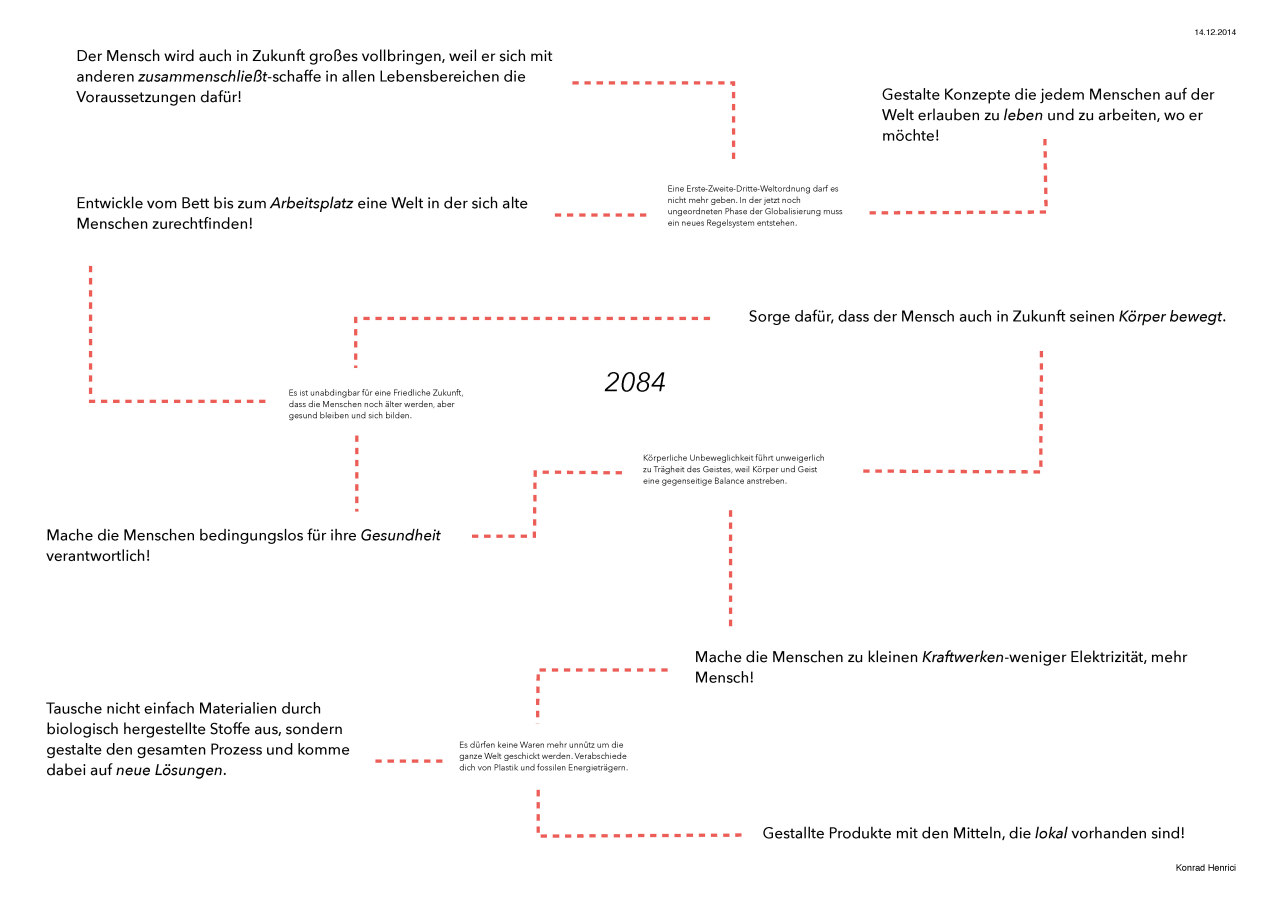HELIOCEDIE
In spring, a manipulated insect puts bacteria into the freshly sprouting
branches of a tree. The bacteria have the property of introducing genetic
material into the plant cell. The plant accepts the blueprint and begins to
develop Heliocedia. The Heliocedie is a plant gall that produces electricity.
It is based on the functional principle of the Grätzel cell. Each leaf
represents a solar cell. So that no leaves overlap, they are arranged according
to the Fibonacci sequence. Many arrangements in nature show the golden angle
and enable plants to be built in a particularly space-saving and efficient way.
In the body of the Heliocedie there is electronics with an antenna. Via
electromagnetic waves the energy is transmitted over a few meters from the tree
to devices that people carry with them in 2084. Street trees near buildings
send their energy through the wall directly to the household appliances. The
antenna is mounted in such a way that it can follow passing pedestrians with
its directional radio.
Grätzel cell:
In the Grätzel cell, red dye is used to absorb light. Like cholrophyll, this
dye is found in almost all plants. There it serves as protection against strong
UV radiation. Here it brings electrons to a higher energy level, so that a
current flow is created. All other substances from the Grätzel cell can also be
exchanged by plant-own substances.
To be protected against frost in winter, Heliocedie uses natural antifreeze molecules such as amino acids, sugar or peptides. Electronic components could be realized by bacteria, e.g. “cable bacteria” discovered on the seabed or bacteria that produce conductive protein layers.
Manifest by Konrad Henrici

| student: | Konrad Henrici |
| project: | 2048 |
| year: | 2014/15 |
